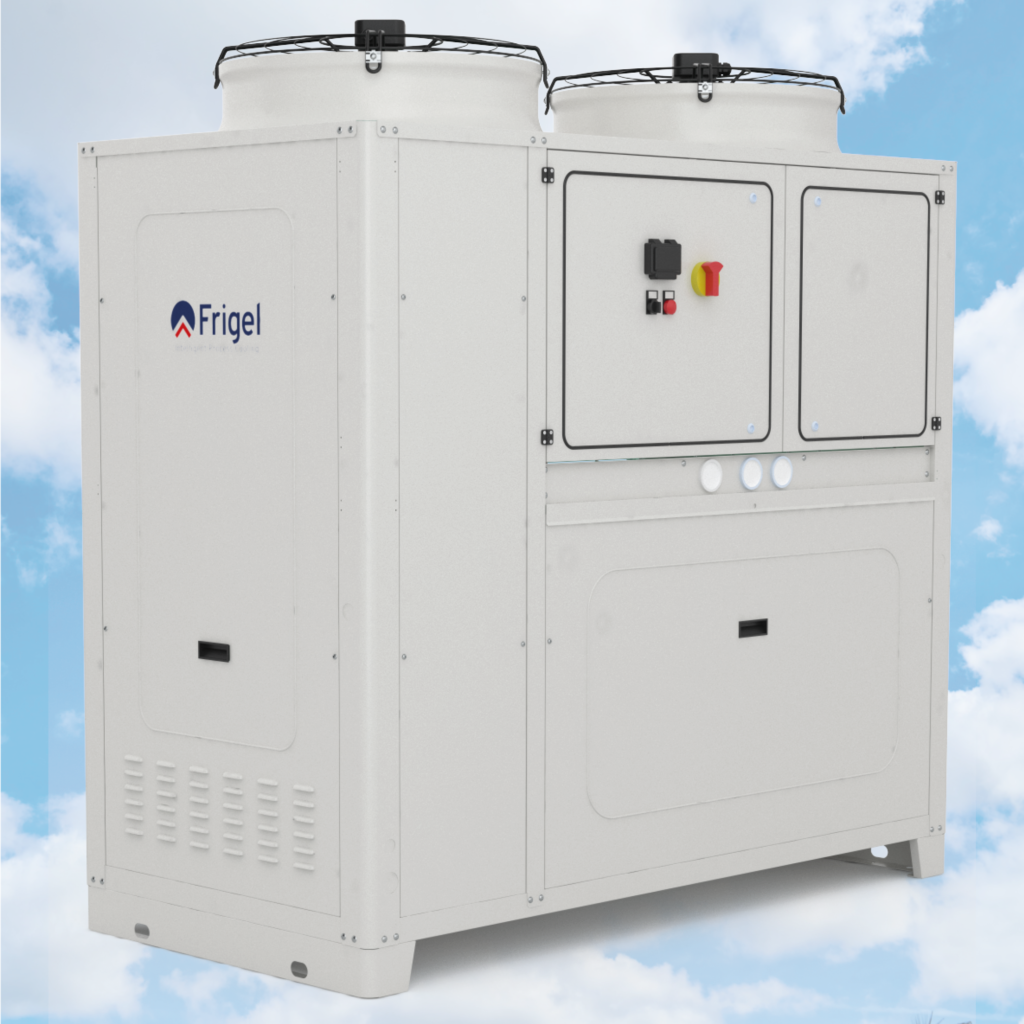Knowledge Hub
Process Cooling: What is Free Cooling? Is it Really Free?
Did you know you can significantly reduce your process cooling costs whilst maintaining the quality of your production?
It’s called free cooling – and it can have a huge impact on the cost-savings of your business…
What Is Free Cooling?
A free cooler is a cooling competent that consists of an air to fluid heat exchanger and electronic fans. The electronic fans pull the ambient air over the heat exchanger which achieves a cooling effect to the fluid in lower ambient conditions.
Industrial chillers provide a reliable and efficient way of expelling the unwanted heat; however, in spite of this, the cost involved in process cooling through mechanical refrigeration systems can soon add up.
Free cooling systems, which can be incorporated into new and existing industrial chiller systems, can alleviate these expenses by using ambient air to cool process fluids instead. Solely, using fan power energy, rather than mechanical refrigeration components.
Free Cooling Can Remedy the Crisis of Heightened Energy Costs
With rising energy costs, free process cooling can help businesses significantly reduce their outgoings. By allowing industrial chillers to become either redundant or operate at a lower capacity during the colder months, businesses can significantly reduce spend on running their energy-consuming chillers.
It’s worth noting that the mean ambient temperature of the UK is between 9° and 10° Celsius – the colder temperature means process cooling with a free cooling system is much more viable. In fact, chillers are oversized for 70-80% of their operating time over a 12-month period because ambient temperatures are so low. The colder the ambient air, the more effective the system will be at cooling process fluids and the less you need to rely on an industrial chiller.
Free Cooling Can Reduce Workload on Mechanical Refrigeration Systems and Industrial Chillers
Free cooling systems also help to alleviate the stresses placed on mechanical refrigeration systems such as industrial chillers.
This can extend the lifespan of industrial chillers as they’re not working so hard all year round, but instead can be utilised mainly during the hot summer months. This can further lower the maintenance cost of chillers, as well as contribute towards lowering the carbon footprint of your business; since free process cooling consumes less energy than the running of industrial chillers, you can reduce your energy consumption.
How do Free Cooling Systems Work?
Free cooling systems work on the principle of heat exchange – transferring heat from a process fluid to another source. With a free cooling system, ambient air (which is at a lower temperature than the process fluid) can be used to cool the warm process fluid.
During the cooler months external ambient air can drop to a temperature which is below the temperature of the returning process fluid. Using a modulating valve, the process fluid can be automatically redirected to the free cooler, before reaching the industrial chiller, in order to cool the fluid. Ambient air will then dissipate the heat. This can be achieved when ambient temperatures are as little as 3° Celsius lower than the warm process fluid.
However, partial free cooling can also be achieved to reduce the workload of your industrial chiller in cases where the chiller is still required (typically, because the ambient air is not low enough to cool the process fluid by itself). With partial free cooling, ambient air lowers the temperature of the process fluid, which continues to be run through an industrial chiller in order to be lowered further to meet requirements.
There are 2 ways of achieving free cooling: either with an integral free cooling chiller, or a standalone free cooler alongside an industrial chiller.
Integrated systems are generally more compact, making them suitable for applications where space is limited; standalone coolers, in contrast to this, can range in size – which also means the capacity of the cooler varies depending on its size. Standalone free coolers can achieve full free cooling in a higher ambient temperature, delivering a more efficient solution.
As previously mentioned, free cooler systems can be integrated into your industrial environment as a new system, or can be retrofitted into an existing system; this latter industrial chiller modification is perfect for environments where the mechanical refrigeration system is working well, but you’re looking to reduce the cost of running it.
Is Free Cooling Really Free?
Industrial free cooling systems are not entirely free. They must be purchased to be integrated into an existing mechanical refrigeration system, or bought as a new system complete with a mechanical refrigeration system. Once purchased, you will also need to cover the cost of installing the system.
This said, free cooling systems can surpass their payback period pretty quickly – and after paying for themselves, they essentially operate for free. The payback period is generally between 6 and 12 months of operation.
Other costs to account for include the maintenance of the free cooling system and the running of your industrial chiller alongside the system.
Get High Return on Investment (ROI) with Continual Energy Saving Through Free Cooling
Free process cooling offers continual energy saving which can soon provide a high return on investment – or ROI.
Free cooling systems are designed to specifically target localised industrial processes and it is this targeting and efficiency which ensures its ROI.
In this way, free coolers are a popular way of innovating your industrial processes for greater efficiency and productivity, without increasing spend.
If you’re looking to streamline both your operations and operational costs, free process cooling systems provide a reliable and highly efficient way of cutting your costs and further shrinking your carbon footprint.
